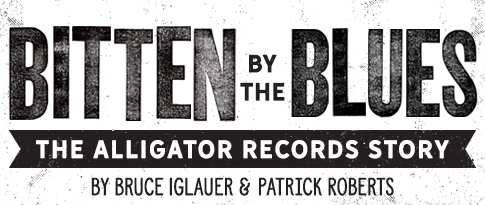I only once saw Muddy in a black-audience club. On New Year’s Eve of 1970-71, I was working at the Jazz Record Mart. It was open until 9 but there were no customers, and it was snowing. Sometime before closing, a young man walked in. We got to chatting and he told me that he was newly in the army, and soon would ship out to Vietnam. He had come from Texas to Chicago to hear some blues. I wasn’t planning to go out that night, but knowing what he was facing, I felt I had to take him to hear some music.
The White Rose was a roadhouse in Phoenix, Illinois, at 153rd St. & Vincennes Ave. Phoenix was an unincorporated part of Cook County, which meant it was only patrolled by the country sheriff. I had been there once or twice; it was a long drive. The White Rose was a pretty wild joint, with wide open gambling and probably prostitution. It could be rough, I had been told. One musician (I think it was Art “Dogman” Jackson) told me that when he went there, he’d take a sawed-off shotgun and hide it in the bushes near the club (closer than his parked car), “just in case.”
It’s generally assumed that bands like Muddy’s and Wolf’s had the same personnel for every gig, but that wasn’t always the case. Otis Spann had died in 1970 and for some time Muddy didn’t have a piano player. That night was the first night I heard Pinetop Perkins with Muddy. Pinetop was pretty unknown at the time. He wasn’t the two-fisted player that Spann had been, but he was damn good. On harp was my friend Carey Bell. He had joined Muddy earlier that fall but only lasted in the band until sometime in 1971. I think Mojo Buford preceded and followed him. Willie “Big Eyes” Smith was on drums and Little Sonny Wimberley on bass. Muddy generally had two guitar players. Often one of them was the great Sammy Lawhorn, but Sammy drank hard and Muddy would sometimes fire him, and then rehire him at a later date. The guitar player I remember from that night was PeeWee Madison.
Muddy had been in bad auto accident in October of 1969 and he was still on crutches. He had to sing from a stool; standing was too hard. By this time, the years of having his hair chemically straightened into his signature pompadour had burned his scalp, and he was bald on top. I remember he was wearing a rather loud plaid sport coat. He was probably 58 but looked older; the accident had really aged him. But the audience was full of women (some of them quite large), and when Muddy came out, they didn’t see the middle-aged bald man on crutches in a plaid sport coat. They saw the virile, testosterone-fueled, charismatic Muddy Waters whose hyper-masculine voice had made him a star on the South Side twenty years before. In those years, Muddy was well known for his harem of women. Every time he sang a familiar verse, the women in the White Rose were on their feet, waving their arms and screaming approval. Had Muddy desired to create a new harem that night, I’m sure he would have had no trouble.
Seeing the esteemed Godfather Of The Blues not as an aging man but as a sex symbol was a revelation to me. It gave me another insight into the raw power of the blues, and why the black blues audience was so heavily female.
By the way, I heard from the young soldier a couple years ago. He survived the war and is still a blues fan.
Bruce Iglauer
